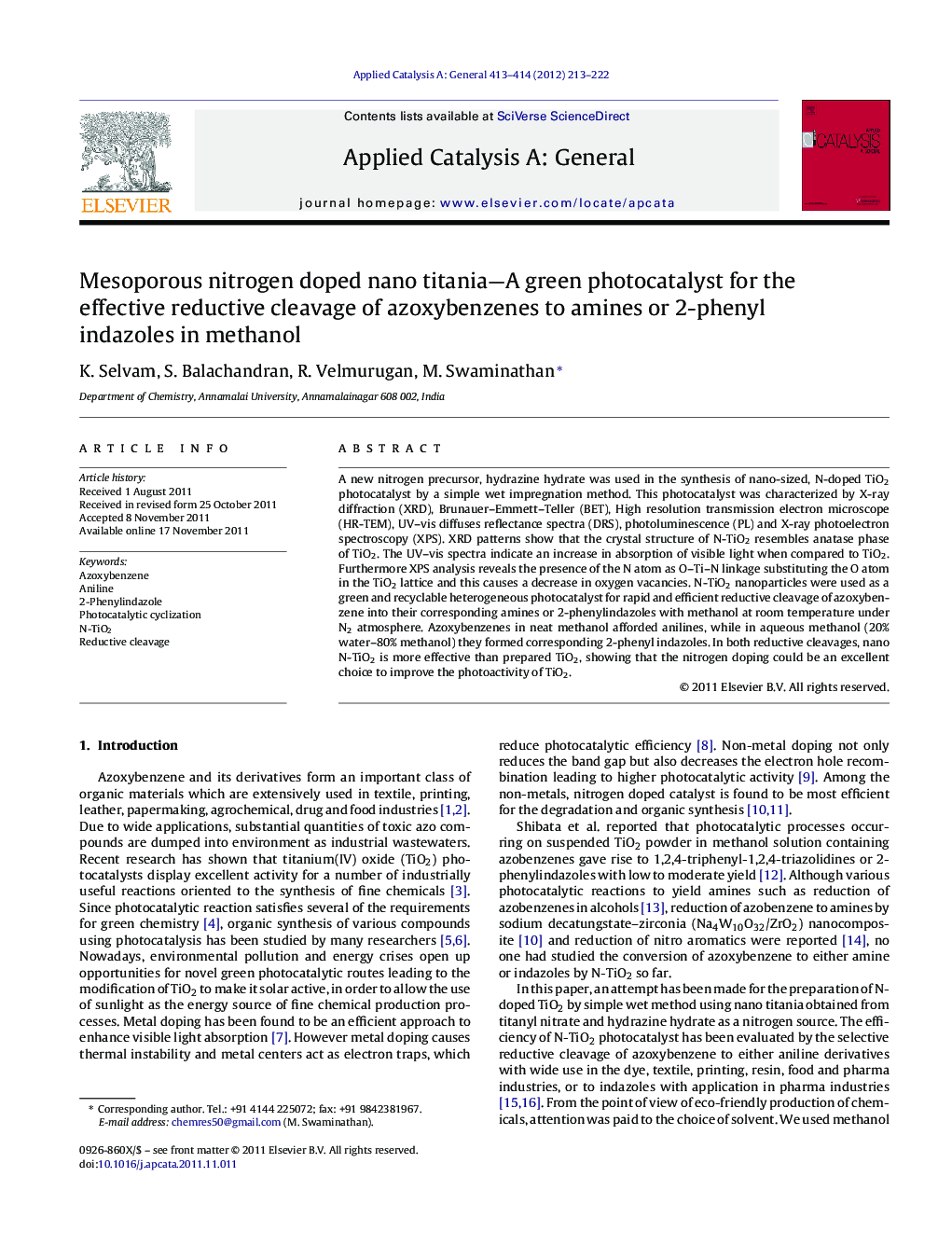| کد مقاله | کد نشریه | سال انتشار | مقاله انگلیسی | نسخه تمام متن |
|---|---|---|---|---|
| 41111 | 45877 | 2012 | 10 صفحه PDF | دانلود رایگان |

A new nitrogen precursor, hydrazine hydrate was used in the synthesis of nano-sized, N-doped TiO2 photocatalyst by a simple wet impregnation method. This photocatalyst was characterized by X-ray diffraction (XRD), Brunauer–Emmett–Teller (BET), High resolution transmission electron microscope (HR-TEM), UV–vis diffuses reflectance spectra (DRS), photoluminescence (PL) and X-ray photoelectron spectroscopy (XPS). XRD patterns show that the crystal structure of N-TiO2 resembles anatase phase of TiO2. The UV–vis spectra indicate an increase in absorption of visible light when compared to TiO2. Furthermore XPS analysis reveals the presence of the N atom as O–Ti–N linkage substituting the O atom in the TiO2 lattice and this causes a decrease in oxygen vacancies. N-TiO2 nanoparticles were used as a green and recyclable heterogeneous photocatalyst for rapid and efficient reductive cleavage of azoxybenzene into their corresponding amines or 2-phenylindazoles with methanol at room temperature under N2 atmosphere. Azoxybenzenes in neat methanol afforded anilines, while in aqueous methanol (20% water–80% methanol) they formed corresponding 2-phenyl indazoles. In both reductive cleavages, nano N-TiO2 is more effective than prepared TiO2, showing that the nitrogen doping could be an excellent choice to improve the photoactivity of TiO2.
Figure optionsDownload high-quality image (116 K)Download as PowerPoint slideHighlights
► High surface area N-doped TiO2 was synthesized by a simple wet impregnation method.
► N-TiO2 is used for cleavage of azoxybenzenes into amines or 2-phenylindazoles.
► In both conversions, mesoporous N-TiO2 is more effective than prepared TiO2.
► Our reaction conditions provide selective conversion of anilines.
► Easy product isolation and catalyst reusability make this reaction eco-friendly.
Journal: Applied Catalysis A: General - Volumes 413–414, 31 January 2012, Pages 213–222